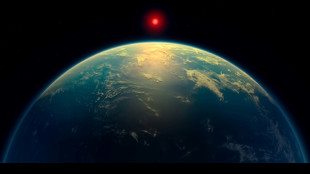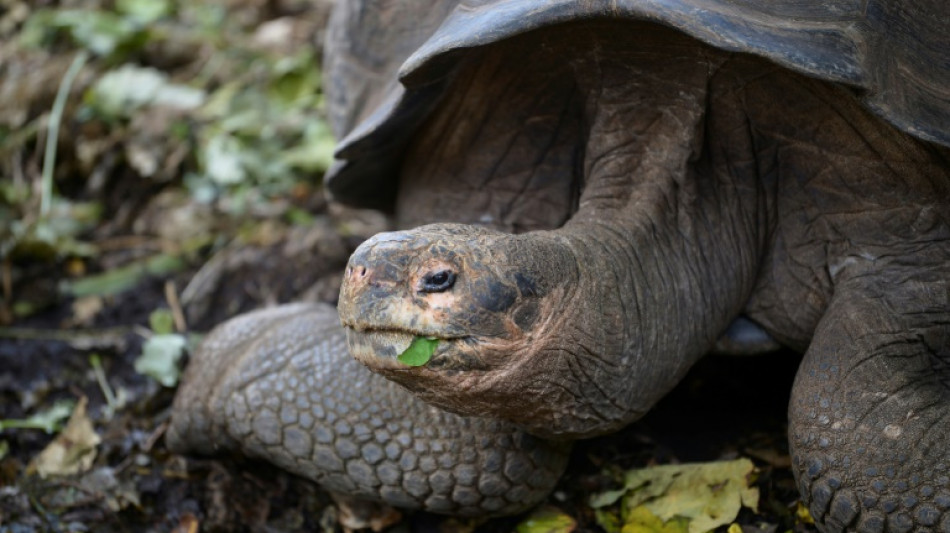
-
 Vance discusses migration during Vatican meeting with pope's right-hand man
Vance discusses migration during Vatican meeting with pope's right-hand man
-
Afghan FM tells Pakistan's top diplomat deportations are 'disappointment'

-
 British cycling icon Hoy and wife provide solace for each other's ills
British cycling icon Hoy and wife provide solace for each other's ills
-
Money, power, violence in high-stakes Philippine elections

-
 Iran, US hold second round of high-stakes nuclear talks in Rome
Iran, US hold second round of high-stakes nuclear talks in Rome
-
Japanese warships dock at Cambodia's Chinese-renovated naval base

-
 US Supreme Court pauses deportation of Venezuelans from Texas
US Supreme Court pauses deportation of Venezuelans from Texas
-
Pakistan foreign minister arrives in Kabul as Afghan deportations rise

-
 Heat and Grizzlies take final spots in the NBA playoffs
Heat and Grizzlies take final spots in the NBA playoffs
-
Iran, US to hold second round of high-stakes nuclear talks in Rome

-
 Humanoid robots stride into the future with world's first half-marathon
Humanoid robots stride into the future with world's first half-marathon
-
Migrant's expulsion puts Washington Salvadorans on edge

-
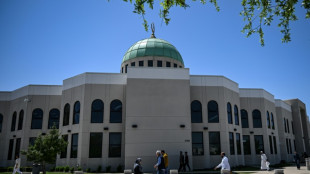 Plan for expanded Muslim community triggers hope, fear in Texas
Plan for expanded Muslim community triggers hope, fear in Texas
-
Pakistan foreign minister due in Kabul as deportations rise
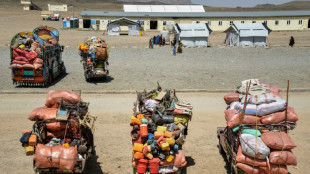
-
 White House touts Covid-19 'lab leak' theory on revamped site
White House touts Covid-19 'lab leak' theory on revamped site
-
Dodgers star Ohtani skips trip to Texas to await birth of first child

-
 US senator says El Salvador staged 'margarita' photo op
US senator says El Salvador staged 'margarita' photo op
-
Ford 'adjusts' some exports to China due to tariffs

-
 Thomas maintains two-shot lead at RBC Heritage
Thomas maintains two-shot lead at RBC Heritage
-
US to withdraw some 1,000 troops from Syria

-
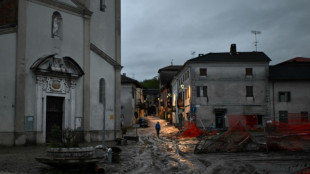 Four killed after spring storms wreak havoc in the Alps
Four killed after spring storms wreak havoc in the Alps
-
Spurs' Popovich reportedly home and well after 'medical incident'

-
 Trump goes to war with the Fed
Trump goes to war with the Fed
-
Celtics chase second straight NBA title in playoff field led by Thunder, Cavs

-
 White House site blames China for Covid-19 'lab leak'
White House site blames China for Covid-19 'lab leak'
-
Norris edges Piastri as McLaren top Jeddah practice

-
 Trump warns US could ditch Ukraine talks if no progress
Trump warns US could ditch Ukraine talks if no progress
-
Judge denies Sean 'Diddy' Combs push to delay trial

-
 80 killed in deadliest US attack on Yemen, Huthis say
80 killed in deadliest US attack on Yemen, Huthis say
-
Lebanon says two killed in Israeli strikes in south

-
 Trump says US will soon 'take a pass' if no Ukraine deal
Trump says US will soon 'take a pass' if no Ukraine deal
-
F1 success is 'like cooking' - Ferrari head chef Vasseur

-
 Cycling mulls slowing bikes to make road racing safer
Cycling mulls slowing bikes to make road racing safer
-
Macron invites foreign researchers to 'choose France'
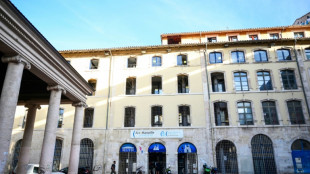
-
 Klopp 'happy' in new job despite Real Madrid rumours: agent
Klopp 'happy' in new job despite Real Madrid rumours: agent
-
Alcaraz into Barcelona semis as defending champion Ruud exits

-
 Vance meets Italy's Meloni before Easter at the Vatican
Vance meets Italy's Meloni before Easter at the Vatican
-
Evenepoel returns with victory in Brabantse Pijl

-
 Maresca confident he will survive Chelsea slump
Maresca confident he will survive Chelsea slump
-
Mob beats to death man from persecuted Pakistan minority

-
 Lebanon says one killed in Israeli strike near Sidon
Lebanon says one killed in Israeli strike near Sidon
-
Arsenal's Havertz could return for Champions League final

-
 US officials split on Ukraine truce prospects
US officials split on Ukraine truce prospects
-
Client brain-dead after Paris cryotherapy session goes wrong

-
 Flick demands answers from La Liga for 'joke' schedule
Flick demands answers from La Liga for 'joke' schedule
-
'Maddest game' sums up Man Utd career for Maguire

-
 Trial opens for students, journalists over Istanbul protests
Trial opens for students, journalists over Istanbul protests
-
Gaza rescuers say Israeli strikes kill 24 after Hamas rejects truce proposal

-
 'Really stuck': Ukraine's EU accession drive stumbles
'Really stuck': Ukraine's EU accession drive stumbles
-
'Not the time to discuss future', says Alonso amid Real Madrid links


New giant tortoise species found in Galapagos after DNA study
A new species of giant tortoise has been discovered in the Galapagos after DNA testing found animals living on one island had not yet been recorded, Ecuador's environment ministry said.
Researchers compared the genetic material of tortoises currently living on San Cristobal with bones and shells collected in 1906 from a cave in the island's highlands and found them to be different.
The 20th-century explorers never reached the lowlands northeast of the island, where the animals live today, and as a result, almost 8,000 tortoises correspond to a different lineage to what was previously thought.
"The species of giant tortoise that inhabits San Cristobal Island, until now known scientifically as Chelonoidis chathamensis, genetically matches a different species," the ministry said Thursday on Twitter.
Galapagos Conservancy said in a newsletter that the Chelonoidis chathamensis species is "almost certainly extinct" and that the island had in fact been home to two different varieties of tortoise, one living in the highlands and another in the lowlands.
Located in the Pacific about 1,000 kilometers (600 miles) off the coast of Ecuador, the Galapagos Islands are a protected wildlife area and home to unique species of flora and fauna.
The archipelago was made famous by British geologist and naturalist Charles Darwin's observations on evolution there.
There were originally 15 species of giant tortoise on the islands, three of which became extinct centuries ago, according to the Galapagos National Park.
In 2019, a specimen of Chelonoidis phantastica was found on Fernandina Island more than 100 years after the species was considered extinct.
The study by researchers from Newcastle University in Britain, Yale in the United States, the American NGO Galapagos Conservancy and other institutions was published in the scientific journal Heredity.
They will continue to recover more DNA from the bones and shells to determine whether the tortoises living on San Cristobal, which is 557 kilometers long, should be given a new name.
pld/atm/ybl/je/cwl
Une étude ADN a révélé que les tortues géantes qui vivent sur l'île de San Cristobal, aux Galapagos, correspondent à une nouvelle espèce qui n'avait pas encore été recensée par la science, a déclaré jeudi le ministère équatorien de l'Environnement.
"L'espèce de tortue géante qui peuple l'île San Cristobal, jusqu'à présent connue scientifiquement sous le nom de Chelonoidis chathamensis, correspond génétiquement à une espèce différente", a indiqué le ministère sur Twitter.
Des chercheurs de l'université de Newcastle, de l'université de Yale, de l'ONG américaine Galapagos Conservancy et d'autres institutions ont comparé le matériel génétique de tortues vivant actuellement à San Cristobal, une île de 557 km de long, avec des os et des carapaces recueillis en 1906 par l'Académie des sciences de Californie dans une grotte située sur les hauts plateaux de l'île.
Au moment de la description de Chelonoidis chathamensis, le groupe d'expéditionnnaires qui a recueilli les ossements de la grotte n'avait jamais atteint les basses terres du nord-est de San Cristóbal, où vivent aujourd'hui les tortues.
De ce fait, "les scientifiques ont conclu que les près de huit mille tortues qui existent aujourd'hui à San Cristobal pourraient ne pas être des Chelonoidis chathamensis, mais correspondre à une toute nouvelle lignée", a expliqué le ministère de l'Environnement dans un communiqué.
Galapagos Conservancy a ajouté dans un bulletin que le groupe Chelonoidis chathamensis des hauts plateaux de San Cristobal "est presque certainement éteint" et que l'île abritait non pas une mais deux variétés différentes de tortues, l'une vivant dans les hauts plateaux et l'autre dans les basses terres.
L'étude, qui a été publiée dans la revue scientifique Heredity, se poursuivra par la récupération de davantage d'ADN sur les os et les carapaces afin de déterminer si les tortues vivantes de San Cristobal doivent recevoir un nouveau nom.
Il y a des millions d'années, San Cristobal était peut-être divisée en deux par la mer et chaque partie avait sa propre espèce de chélonien. Mais lorsque le niveau de l'eau a baissé, les deux îles ont fusionné, tout comme leurs tortues.
Les Galapagos, site du patrimoine mondial doté d'une flore et d'une faune uniques au monde, doivent leur nom aux tortues géantes. Il y avait à l'origine 15 espèces de chéloniens géants dans l'archipel, dont trois se sont éteintes il y a des siècles, selon le Parc national Galapagos (PNG).
En 2019, un spécimen de Chelonoidis phantastica a été retrouvé sur l'île Fernandina après plus de 100 ans où l'espèce était considérée comme éteinte.
D.Schneider--BTB


